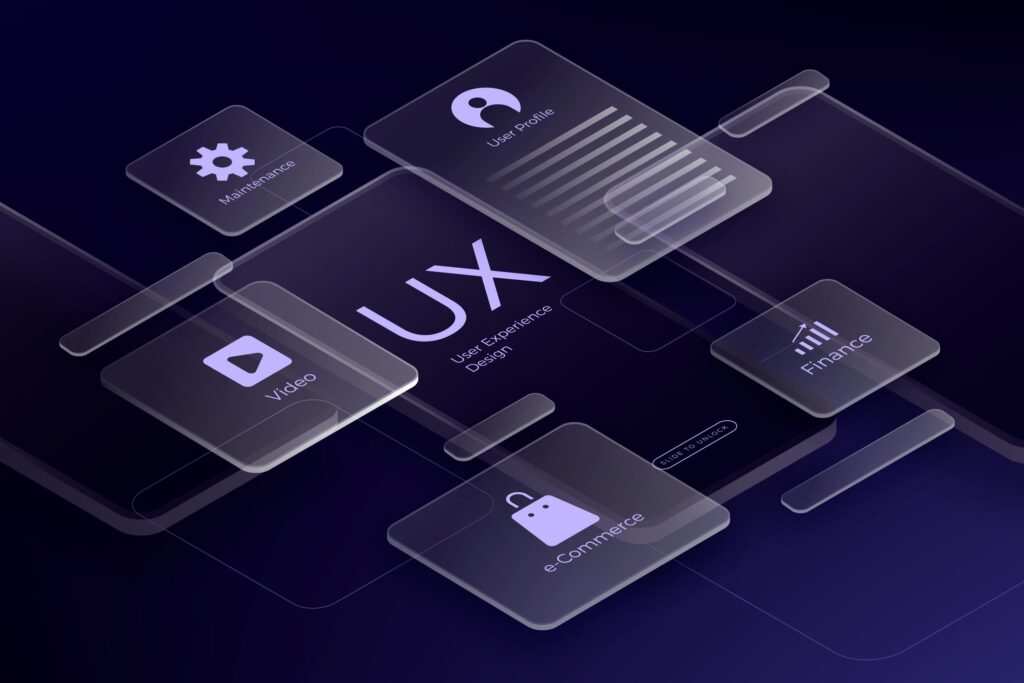
Being a digital professional, I have been a witness to the peerless power of User Experience (UX) Design in action. Nowadays, in the world of digital business, where everything is fast and highly competitive, it has become extremely important that the user’s experience is prioritized for businesses to excel.
UX design is the process that stands behind building a bridge between the users and anybody’s digital services or products, by creating a smooth and meaningful experience. With a grasp of UX Design principles and trends, firms can improve the level of customer satisfaction, create high engagement, and accomplish the envisaged success. In this article, I will dive into the key trends that you should be aware of and adopt for you to improve your UX Design.
Table of contents
The Significance of UX Design in the Digital Realm
With the variety of options before the users in digital space, the importance of UX Design becomes untold. UX Design is not only about visualizing the website or the application but also making the experience of the user interesting as well as efficient. A properly executed user experience can construct trust, fraternity, and a positive perception of the brand. While an excellent user experience can contribute to a positive opinion, a bad one can lead to frustration, abandonment, and negative word of mouth. Unbelievably, a one-second delay in page load time can lower your chance of conversion by 7%.
As a result, the decision to put finance into UX Design is a premeditated step that can dramatically influence the net income of a business. Excellent user experience is directly related to basic considerations of UX Design.
Key Principles of Effective UX Design
Effective UX develops on a platform of essential principles known as pillars that guide the whole design process. This code of conduct functions like a compass for designers, and helps them build user-oriented, simple, and functional experiences. The first of these principles is simplicity. Through this, designers can ensure a much cleaner user interface that is free of anything irrelevant by creating such an experience.
Transparency is another key principle that should define the fact that the aim and the function of every element of design are clear to the users. Consistency is a must to make a proper context across a variety of touchpoints. By using these principles, and others to mention, hierarchy, feedback, and affordance, designers can develop interactions that are not only aesthetic but also, highly functional and user-friendly as well.
Understanding User Behavior and Psychology

To develop an outstanding user experience, it is imperative to understand user behavior and psychology. Through the comprehension of how users think, act, and make decisions; designers can adhere to the users’ needs and expectations. Another matter of user behavior that has attracted a lot of attention in recent times is micro-interactions.
Microinteractions stand for the small design elements that facilitate the users’ engagement and feedback. Microinteractions are illustrated by the like button on social media or a progress bar when uploading a file. By introducing micro-interactions that are well designed, the designers can create an experience that is satisfying as well as delights the user.
One more user behavior aspect is the fact of the growing need for personalization. These days, people expect personalized experiences that fulfill their specific requirements and tastes.
Personalization could be achieved through data-driven design which involves collection and analysis of user data to provide customized content, recommendations, or functions. By knowing user behavior and psychology, designers can develop interfaces that touch users on a more personal level and boost user engagement.
UX Design Trends for Enhanced User Experience
UX designers must remain up to date with the newest trends in the constantly changing digital landscape. The following are some major trends in UX design to be aware of:
1. Responsive Design and Mobile Optimization
The growing use of mobile devices has made responsive design and mobile optimization two crucial issues when providing users with a glitch-free experience on different screens. Employing responsive design, the websites, and the apps can be adjusted to the device of the viewer for the best possible results. Mobile Friendliness is not limited to responsive design but it encompasses the performance and user experience aspects on mobile devices. Through responsive design and mobile optimization, businesses can improve their reach and offer experiences that are consistent across devices.
Tips for Mobile-First Design and Responsive UX:
- Prioritizing essential content and features for mobile users.
- Using responsive design frameworks like Bootstrap or Foundation to build flexible layouts.
- Testing and optimizing the user experience across various devices and screen resolutions.
2. Voice User Interface and Conversational UX
VUI (Voice user interface) and conversational UX have become widely used with smart assistants and voice command devices in particular. VUI allows users to communicate with various digital products/services using voice commands. Conversational UX involves a conversation between users and digital interfaces, replicating human conversation. Such technologies as VUI and conversational UX can enable hands-free, quick, and interactive interactions between users and businesses.
Key Considerations for Designing VUIs:
- Performing user research to gain insights into user preferences and behaviors.
- Designing for multi-modal interactions to accommodate both voice and visual feedback.
- Testing VUI prototypes with real users to iterate and improve the design.
3. Microinteractions and Animations
Microinteractions are an important factor in elevating the user experience. Among microinteractions, animation stands out as a common trend in User Experience (UX) Design. Animation can act as visual indicators, direction of attention, and a sense of smoothness and fun to the user. Well-designed animations can make the experience more exciting and memorable.
Ways to Implement Microinteractions and Animation:
- Adding hover effects, loading animations, and scroll-triggered animations to capture user attention.
- Using motion design principles such as timing, easing, and anticipation to create smooth animations.
- Balancing visual aesthetics with functional usability to ensure the animations enhance the user experience.
4. Personalization and User-Centric Design
Due to users expecting customized interaction, user-friendly design, and personalization are the top trends now in UX Design. Personalization includes the adaptation of the experience based on the user’s specific preferences and requirements. The focus is on gaining an understanding of the users’ requirements, goals, and frustrations. With the integration of personalization and user-oriented design, companies can build bonds that prompt brand loyalty from their customers.
Strategies for Personalization and Customization:
- Establishing user-profiles and segmentation to know target users’ demographics and preferences.
- Utilizing machine learning and AI algorithms for delivering custom content and recommendations.
- Offering personalization features like themes, page layouts, and settings for preferences.
5. Accessibility and Inclusive Design
The designers have been drawing the line toward the areas of inclusivity and accessibility with a particular focus. Creating experiences that are not only inclusive of but also advantageous for users with disabilities or limitations is more than a moral responsibility; it is a business opportunity. Creating inclusive designs entails taking into account multiple user requirements and offering universal accessibility and usability. Through considering accessibility and inclusive design, businesses can target a bigger group and build an environment that everyone can use.
Best Practices for Accessibility and Inclusive Design:
- Apply WCAG guidelines to design interfaces that are accessible to all including those with disabilities.
- Running a usability test with different user groups to pinpoint and fix the accessibility issues.
- Integrating assistive technologies in the design like screen readers and keyboard navigation.
6. Immersive Technologies and Augmented Reality (AR)
Transformational technologies such as augmented reality (AR) and virtual reality (VR) are currently on the front line for the creation of a whole new experience for interoperability and immersion. AR and VR are the two main technologies used for telling new stories, presenting information, and thrilling users. Engineers try to figure out how the technology can be implemented so that VR&AR is not only entertaining but powerful as well to cover the distance between the physical and digital space.
Applications of Immersive Technologies in UX Design:
- Designing AR applications for interactive product visualization and virtual try-on experiences.
- Creating VR simulations for training, education, and entertainment purposes.
- Integrating immersive technologies with physical spaces to enhance user engagement and brand experiences.
7. Data-Driven Design and User Analytics
The data-driven design is dependent on analyses of user data and insights to back up design decisions, empirical hypothesis testing, and also determine how efficient the UX enhancements are. Data collection and analysis are the means for the designers to discover user behavior, preferences, and pain points, thereby making it possible to improve the user experience and contribute to the business results. Data-based design principles are the components of the designing process that help designers make such decisions, which mainly correspond to the user needs and business goals.
Utilizing User Analytics for Data-Driven Design:
- Installation of user tracking and analytics tools enabling to monitoring of user interactions and behaviors.
- Analyzing user feedback, heatmaps, and conversion rates to understand usability problems and improvement areas.
- Performing A/B and usability tests to validate design hypotheses and enhance user interactions.
Testing and Measuring UX Design Effectiveness
For the UX Design to work well, you have to try and record the results. A/B testing, usability testing, and user feedback are imperative in generating a positive user experience and identifying pain points. Endless testing and measuring is a way businesses can make data-centered decisions and time to time tweak the designs according to the results obtained to uplift the user experience.
UX Design Tools and Resources
When it comes to designing user experiences, in the competitive world, the tools and resources are critical. The design process has many tools that not only make the process more manageable but also bring collaboration and productivity to a higher level. The most common UX Design tools, for instance, are Sketch and Figma for wireframing and prototyping, UserTesting and Optimal Workshop for user research, and Google Analytics and Hotjar for analytics. Also, there are many online groups, blogs, and courses where UX Design professionals can find useful information and materials as well.
Conclusion
The fast-paced digital environment makes it compulsory for businesses to accept the future of UX Design. By realizing the significance of UX design alongside following key guidelines and being knowledgeable of the latest tendencies businesses can design impressive experiences that melt the users and drive an achievement. UX design is not a single-shot deal and requires continuous tuning, testing, and improvement. By devoting to UX Design and making the customer experience the primary force, businesses can stay a step ahead in the digital world.
To enhance your UX Design and drive success in the digital world, contact us today.

